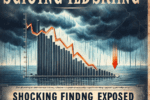Copper prices took a significant dip to their lowest level in nearly two months as the start of a holiday-shortened week on June 17 unfolded. Worries about global growth have been on the rise, triggered by price fluctuations linked to recent elections in Mexico, India, and France.
The US Dollar Index has seen an increase to multi-week highs amid decreasing interest rates, signaling a shift in investor focus from concerns about inflation to worries about growth.
An analyst downgraded the SPDR S&P Metals & Mining ETF from a buy to a hold, following a substantial rally since the previous analysis in the summer of 2023. This surge almost reached a new high above the Q2 2022 peak of $66.63, fueled by global growth optimism and improved momentum in the metals sector.
The Prompt-Month Copper Futures hit their lowest point since April 23, coinciding with XME’s Relative Strength dropping to 1-year lows. Additionally, the US Dollar Index climbed to its highest level since April 30.
XME offers exposure to the metals & mining sector of the S&P Total Market Index, encompassing various sub-industries such as Aluminum, Coal, Copper, Gold, Silver, and Steel. Unlike other ETFs, XME utilizes an equal weight methodology, allowing smaller companies to have a significant impact on performance.
The ETF has experienced growth in size and market value, with total assets under management increasing to $2.0 billion from $1.8 billion last summer, accompanied by a modest annual expense ratio of 0.35%. Despite its low yield of 0.91% over the past 12 months, XME has shown decent share-price momentum.
In terms of portfolio composition, XME is heavily focused on the Materials sector, with the majority of its allocation in that cyclical segment. The ETF’s top 10 holdings make up about half of the portfolio, showcasing some concentration in key positions.
Looking ahead, historical data suggests that June and July tend to be strong months for XME before experiencing weaker trends in August and September. Technical analysis indicates a shift in trend for XME, with potential volatility expected in the coming months.
Overall, XME’s current status as a cyclical-value fund is viewed as being more expensive than in previous years, with momentum signals pointing towards the importance of risk management moving forward.









